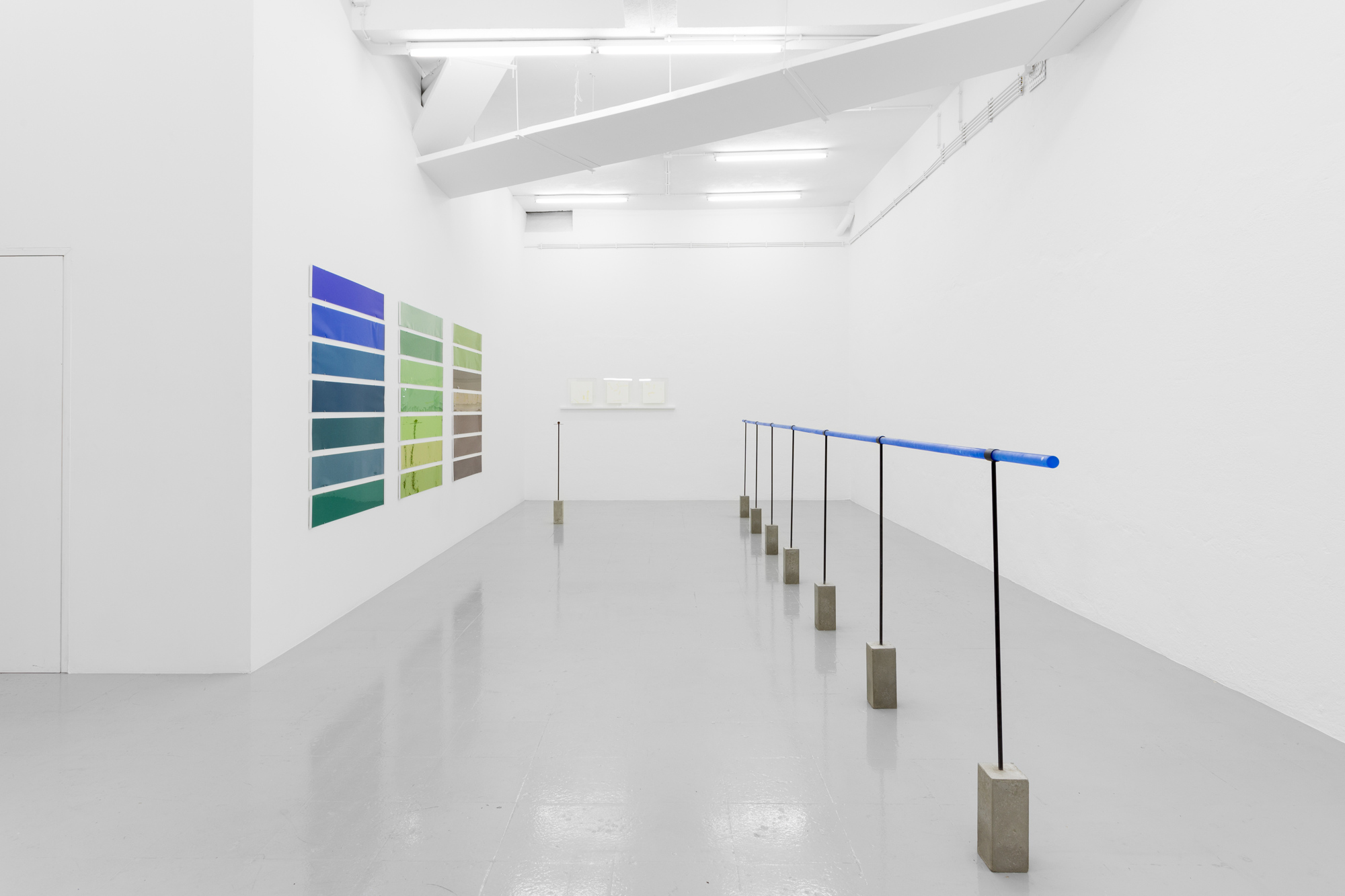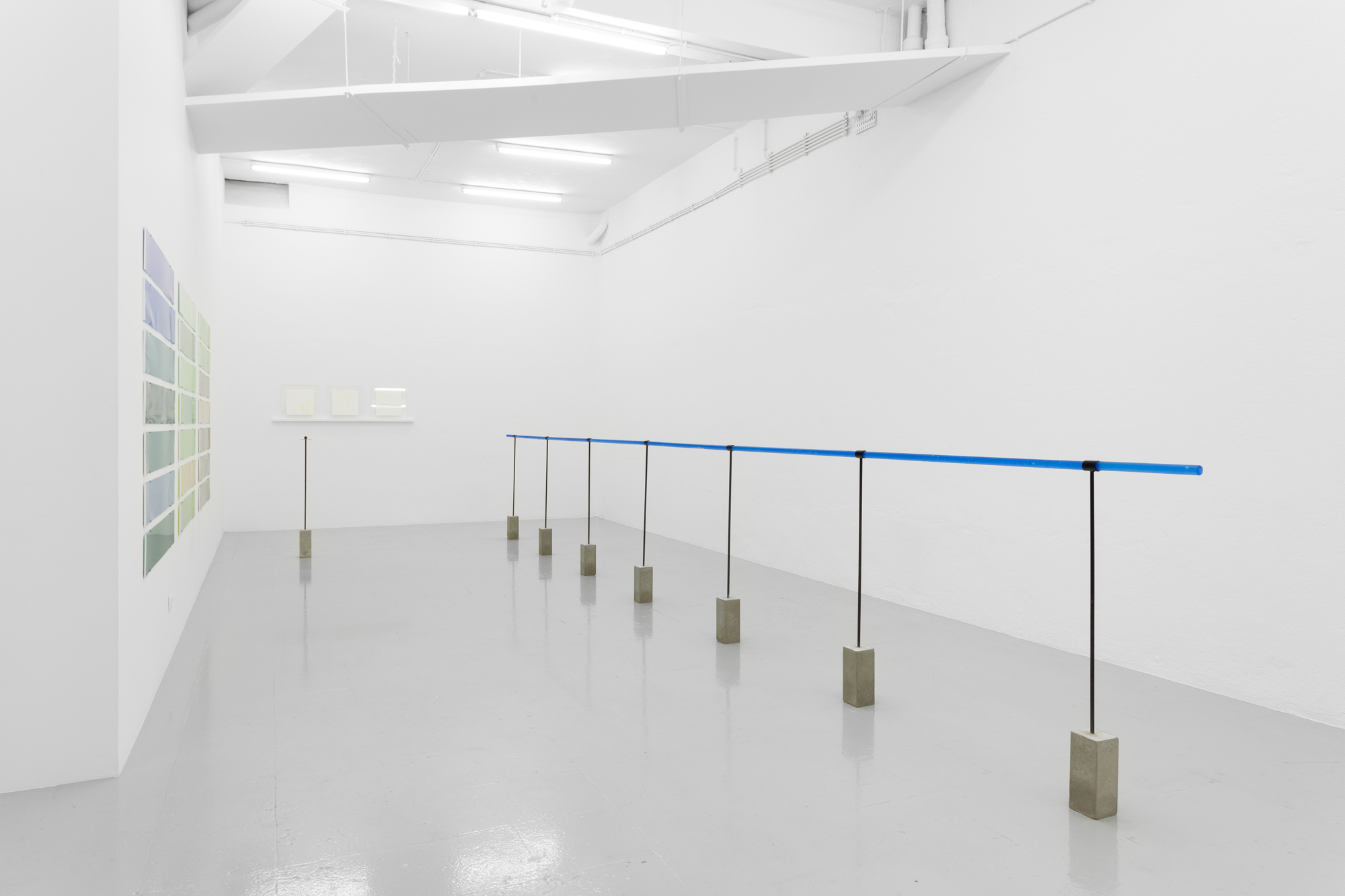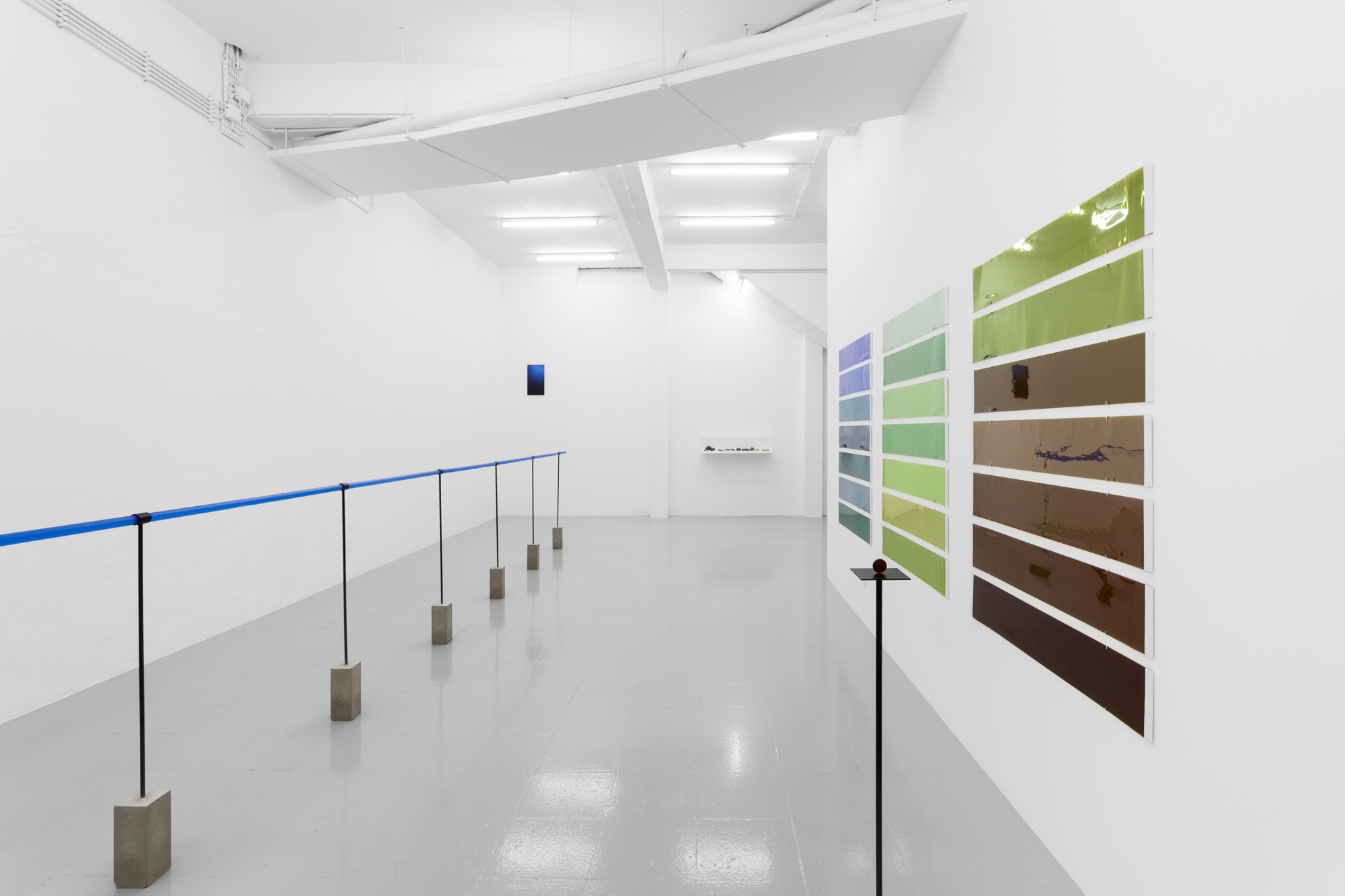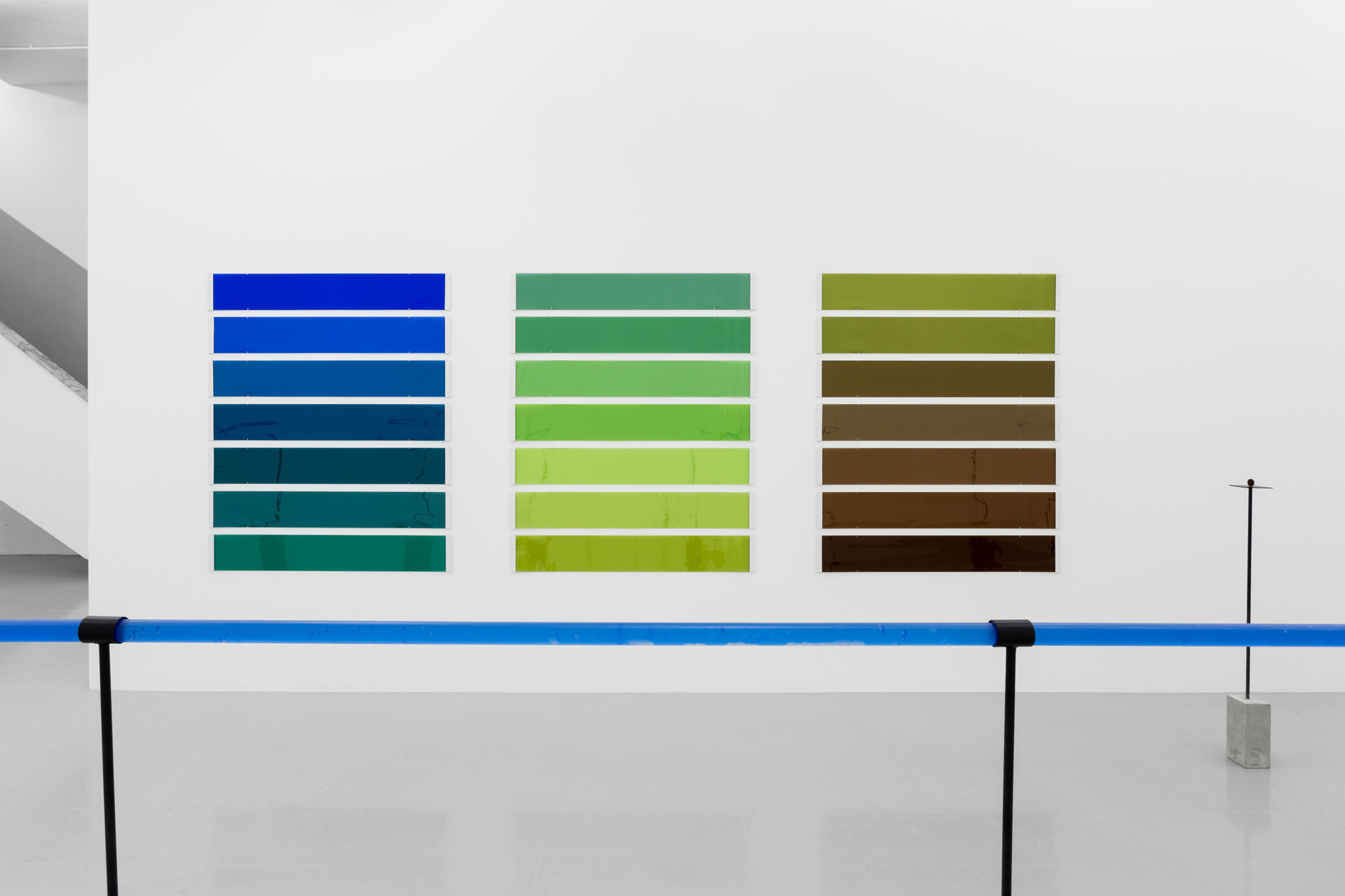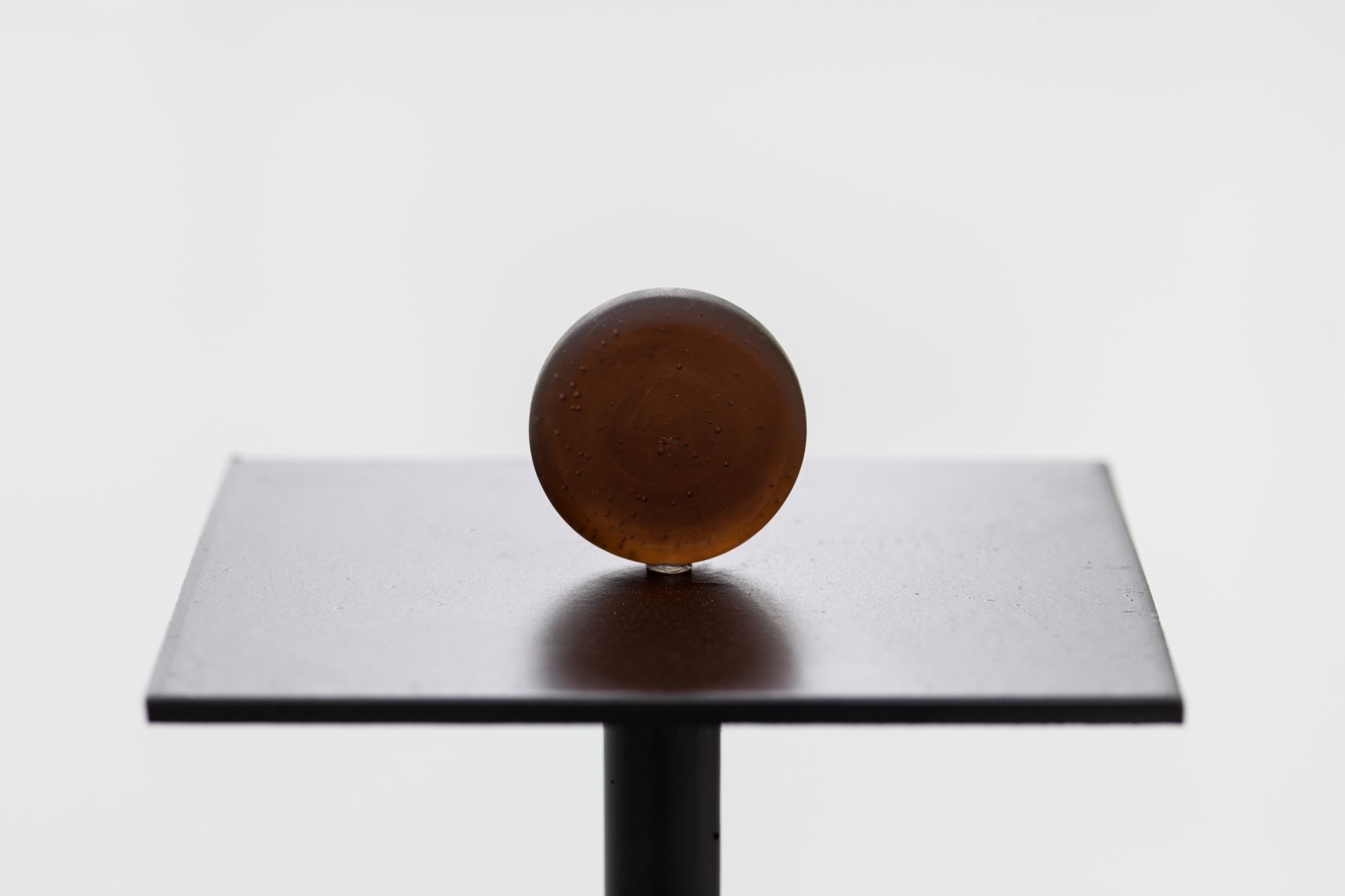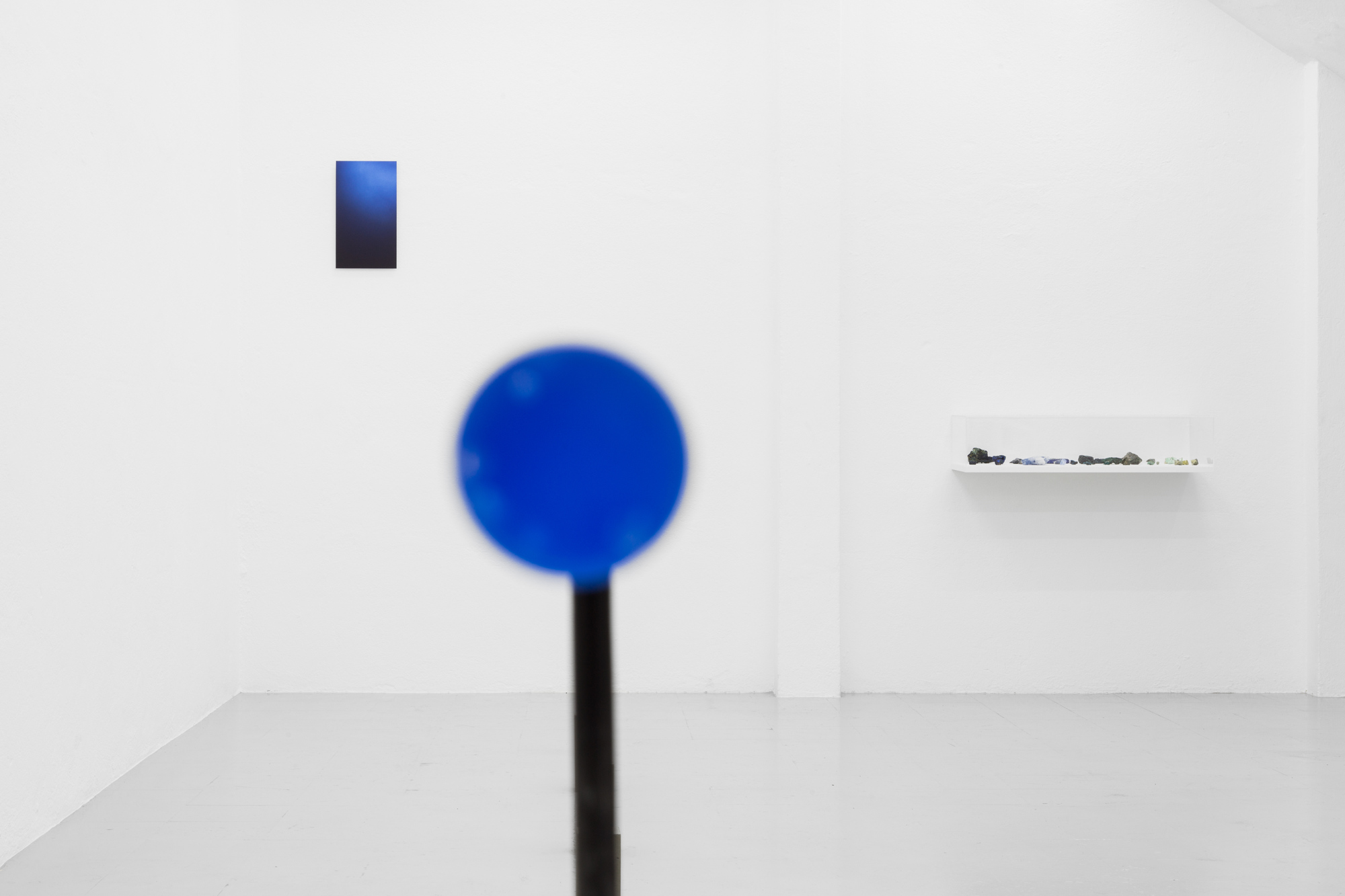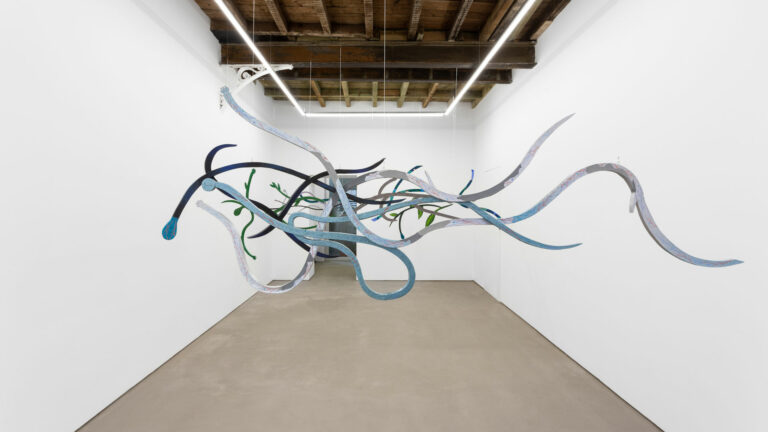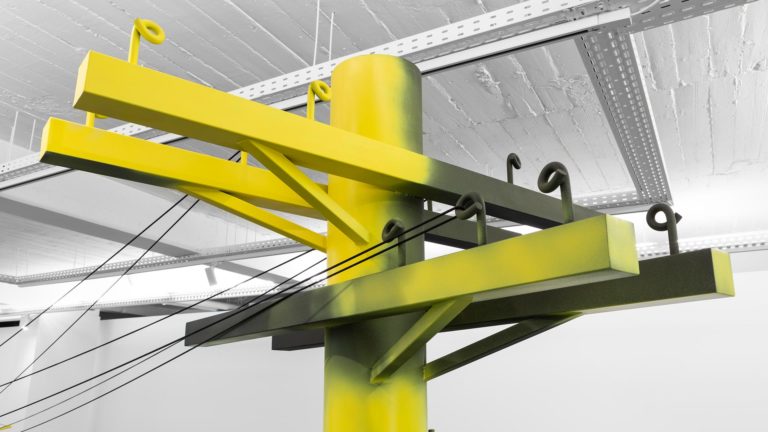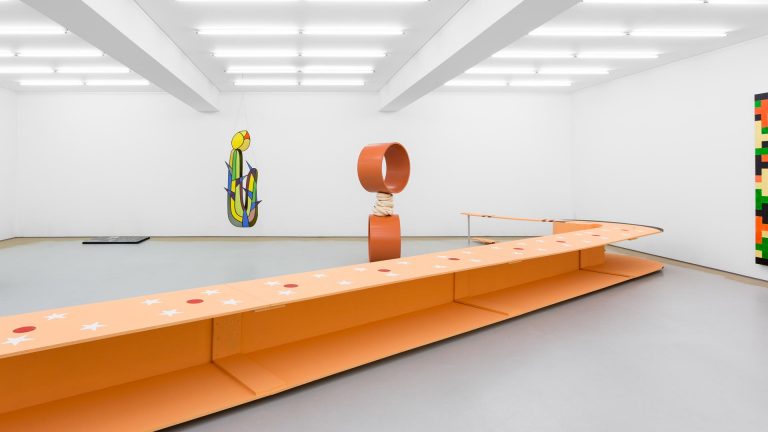Artist: Irene Kopelman
Exhibition title: Indexing Water
Venue: Kunsthalle Lissabon, Lisbon, Portugal
Date: December 5, 2017 – February 18, 2018
Photography: all images copyright and courtesy of the artists and Kunsthalle Lissabon
Kunsthalle Lissabon presents Indexing Water, the first solo show in Portugal by Irene Kopelman (Córdoba, Argentina, 1974). The exhibition opens on September 13 at 6:30 p.m., and is open to the public from December 14 to February 17, 2018.
More than a year ago, when I was invited by Luis Silva and João Mourão to do a site-specific work, especially developed for the Kunsthalle Lissabon I thought it was the right moment and context to start the process of following the thread of an idea I had for a long time: working with the colors of the water.
A few centuries ago, art and science were not such different and separate fields, as we know them today. They had many points of correlations and coexistence. As practitioners in the art field we are aware of the color studies in art history, but color dictionaries were also developed in the field of natural studies as a means of describing and communicating the examination of nature. In 1831, Charles Darwin carried a book called The Nomenclature of Colors aboard the HMS Beagle. Scientists used this book and other “color dictionaries”, predecessors of today’s Pantone swatch books, as a common reference when describing the appearance of whatever they were studying. Color Dictionaries were designed to give people around the world a common vocabulary to describe the colors of everything, from rocks and flowers to stars, birds and postage stamps. They afforded scientists and naturalists the means of descriptive biological precision that could be easily shared so naturalists in Kalamazoo and Germany could communicate effectively about a family of birds found in both places in related (but different) forms. They typically consisted of a set of color swatches; each assigned a name (usually rendered in several languages, to facilitate international use), an identifying number, and an often-lyrical description of the color (“the color of the blood of a freshly killed rabbit” or “mummy brown”).
Once I had decided, by discussing the ideas with Luis and João, that we would go for it, I contacted Dr. Marcel Wernand, a physical oceanographer at NIOZ (Royal Netherlands Institute for Sea Research). Dr. Marcel R. Wernand is a senior research scientist whose main research interests combine the design and development of multi-spectral ocean color instrumentation; bio-optical variability of estuaries, seas and oceans, long-term monitoring of coastal color; long-term changes of ocean color in relation to global change and marine-optical science history. This very particular combination of approaches, summed with a very particular personality made the dialogue from the beginning extremely interesting and enriching. It turned that Marcel was not only a very knowledgeable researcher but also a great story teller. His research had taken him all across the globe, seen many waters and coming across many people. His interest in the history of color studies is what makes it come all alive to me.
The interviews with Marcel become the very core of the project. I kept studying papers, looking at books, getting more involved in the topic to the extreme of joining and participating in a congress of the Ocean Darkening Project. The amount of information started becoming overwhelming and I realized that it had started being more constraining than inspiring. I then realized that the most interesting thing I had in my hands was the conversations with Marcel. His stories, the mental space that all that information was creating in the dialogue with him. I decided then that I would follow that quality. Keep talking to him, recording the interviews, letting the information float and taking notes of images that would materialize from the conversations. The narrative of the conversations became the script of the exhibition as well as the artist book we will publish.
As the conversations were too broad, I proposed Marcel to take the color scale he uses in his studies as a guideline. The scale he still uses is called a Forel-Ule scale. François-Alphonse Forel (1841 –1912) developed the method, and was three years later extended with greenish brown to cola brown colors by the German limnologist Wilhelm Ule (1861 – 1940). The scale has 21 colors. I proposed Marcel to talk color by color. He proposed to group them. One day about blues, one day about greens, yellows and browns. Dissecting the scale by colors helped me better understand the factors affecting the color of the water.
Irene Kopelman (1978) is an Argentinian artist based in Amsterdam. She studied at the School of Arts at the National University of Cordoba where she obtained her bachelor’s and master’s degree in painting (1994 – 2002). In 2002, Kopelman was accepted within the two-year international residency program at the Rijksakademie van beeldende Kunsten in Amsterdam. In the Netherlands, Kopelman began researching the representations of landscapes as recorded by 18th and 19th century naturalists. This period of exploration, during the age of the Enlightenment, is richly archived in museums across the world. A series of collaborations within museum collections such as the Geological Museum (Artis, Amsterdam), the Entomological Collection (University of Amsterdam-UvA), the Teylers Museum (Haarlem), the Natural History Museum in London and the Astronomical Observatory in Cordoba (Argentina) led towards various projects including exhibitions at The Drawing Centre, New York (2007), Apex Art, New
York (2008), Le Plateau, Paris (2009), Gasworks, London (2012) and La Verriere Fondation D’Entrerprise Hermes, Brussels (2013). Her proximity to institutions led Kopelman to begin observing the methodologies of scientists at work in the field and ignited curiosity as to how they framed and organized a subject that was vast, essentially dispersed, extremely dynamic and simply too hidden to grasp or approach all at once. This led Kopelman to spend a period of time at Manu Learning Centre, Madre de Dios, Peru in 2012, following which she joined a group of 40 scientists from Malaysia’s Sabah Parks and The Netherlands Centre for Biodiversity Naturalis (NCB) on an expedition to Mount Kinabalu in Malaysia. A long-term collaboration with STRI (Smithsonian Tropical Research Institute) in Panama began in 2012 and continues. STRI has developed an extensive infrastructure for the study of biodiversity on the Panamanian Isthmus and Kopelman’s partnership with this institution has enabled her to explore subjects such as lianas, marine invasive species, mangroves and fiddler crabs particular to the region. An association with the World Glacier Monitoring Service (WGMS) and the Swiss Federal Institute for Snow and Avalanche Research (SLF) have helped inform and propel her study of glacier landscapes and alpine ecosystems. This development occurred over a period of residency at the Stiftung Laurenz-Haus, Basel in 2013.
Indexing Water is generously supported by Mondriaan Fonds. Additional support is provided by VICARTE – Vidro e Cerâmica para as Artes and by Pólo Cultural Gaivotas Boavista/CML.
Kunsthalle Lissabon is generously supported by Maria and Armando Cabral Collection.
Irene Kopelman, Indexing Water (2017). Exhibition’s view at Kunsthalle Lissabon. Photo: Bruno Lopes
Irene Kopelman, Indexing Water (2017). Exhibition’s view at Kunsthalle Lissabon. Photo: Bruno Lopes
Irene Kopelman, Indexing Water (2017). Exhibition’s view at Kunsthalle Lissabon. Photo: Bruno Lopes
Irene Kopelman, Indexing Water (2017). Exhibition’s view at Kunsthalle Lissabon. Photo: Bruno Lopes
Irene Kopelman, Indexing Water (2017). Exhibition’s view at Kunsthalle Lissabon. Photo: Bruno Lopes
Irene Kopelman, Indexing Water (2017). Water column – scale 1:10. Longer visibility record taken with the Secchi Disk. Photo: Bruno Lopes
Irene Kopelman, Indexing Water (2017). Exhibition’s view at Kunsthalle Lissabon. Photo: Bruno Lopes
Irene Kopelman, Indexing Water (2017). Exhibition’s view at Kunsthalle Lissabon. Photo: Bruno Lopes
Irene Kopelman, Indexing Water (2017). Exhibition’s view at Kunsthalle Lissabon. Photo: Bruno Lopes
Irene Kopelman, Indexing Water (2017). Exhibition’s view at Kunsthalle Lissabon. Photo: Bruno Lopes
Irene Kopelman, Indexing Water (2017). Exhibition’s view at Kunsthalle Lissabon. Photo: Bruno Lopes
Irene Kopelman, Indexing Water (2017). Exhibition’s view at Kunsthalle Lissabon. Photo: Bruno Lopes
Irene Kopelman, Indexing Water (2017). Enlarged version of Forel-Ule Scale. Photo: Bruno Lopes
Irene Kopelman, Indexing Water (2017). Exhibition’s view at Kunsthalle Lissabon. Photo: Bruno Lopes
Irene Kopelman, Indexing Water (2017). Enlarged version of Forel-Ule Scale. Photo: Bruno Lopes
Irene Kopelman, Indexing Water (2017). Water column – scale 1:10. Shortest visibility record taken witha the Secchi Disk. Photo: Bruno Lopes
Irene Kopelman, Indexing Water (2017). Water column – scale 1:10. Shortest visibility record taken witha the Secchi Disk. Photo: Bruno Lopes
Irene Kopelman, Indexing Water (2017). Water column – scale 1:10. Longer visibility record taken with the Secchi Disk [detail]. Photo: Bruno Lopes
Irene Kopelman, Indexing Water (2017). Water column – scale 1:10. Longer visibility record taken with the Secchi Disk [detail]. Photo: Bruno Lopes
Irene Kopelman, Indexing Water (2017). Water column – scale 1:10. Longer visibility record taken with the Secchi Disk [detail]. Photo: Bruno Lopes
Irene Kopelman, Indexing Water (2017). Water column – scale 1:10. Longer visibility record taken with the Secchi Disk [detail]. Photo: Bruno Lopes
Irene Kopelman, Indexing Water (2017). Exhibition’s view at Kunsthalle Lissabon. Photo: Bruno Lopes
Irene Kopelman, Indexing Water (2017). Water column – scale 1:10. Longer visibility record taken with the Secchi Disk [detail]. Photo: Bruno Lopes
Irene Kopelman, Indexing Water (2017). Exhibition’s view at Kunsthalle Lissabon. Photo: Bruno Lopes
Irene Kopelman, Indexing Water (2017). Exhibition’s view at Kunsthalle Lissabon. Photo: Bruno Lopes
Irene Kopelman, Indexing Water (2017). Stones mentioned by Liburnau in his ‘mineral’ sea colour scale (1898). Photo: Bruno Lopes
Irene Kopelman, Indexing Water (2017). Stones mentioned by Liburnau in his ‘mineral’ sea colour scale (1898). Photo: Bruno Lopes
Irene Kopelman, Indexing Water (2017). Stones mentioned by Liburnau in his ‘mineral’ sea colour scale (1898). Photo: Bruno Lopes
Irene Kopelman, Indexing Water (2017). Phytoplankton drawings. Photo: Bruno Lopes
Irene Kopelman, Indexing Water (2017). Phytoplankton drawings. Photo: Bruno Lopes
Irene Kopelman, Indexing Water (2017). Phytoplankton drawings. Photo: Bruno Lopes
Irene Kopelman, Indexing Water (2017). Phytoplankton drawings. Photo: Bruno Lopes


